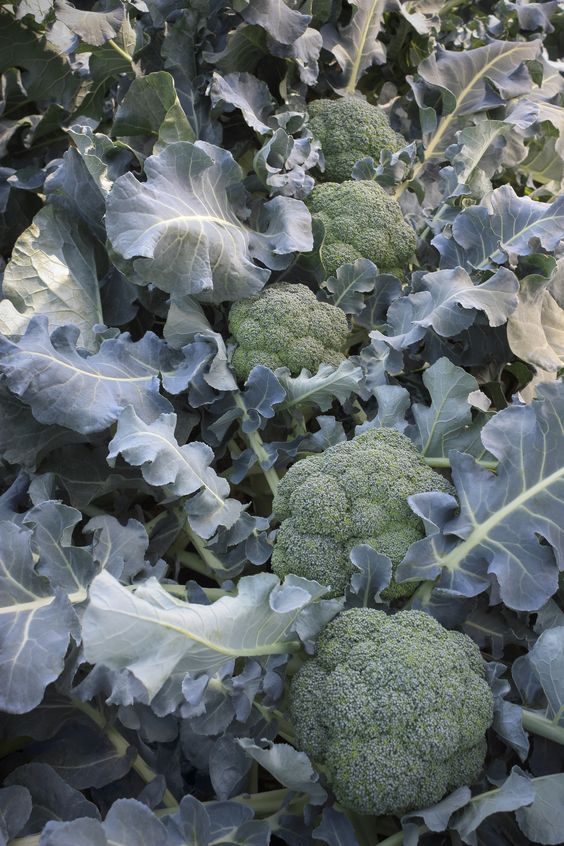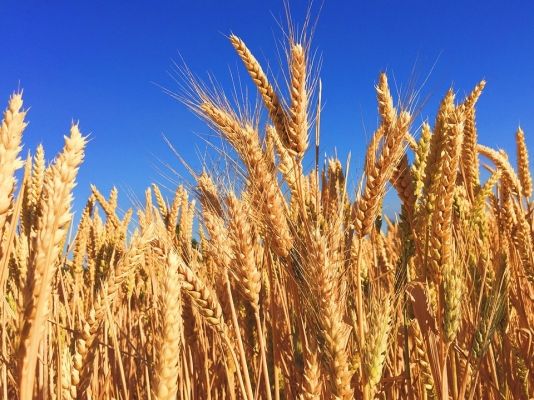Optimizing Plant Broccoli Production: A Guide to Smart Agriculture Practices
Plant Broccoli, a cruciferous vegetable rich in vitamins and minerals, is a popular dietary staple. However, traditional farming methods for broccoli can be resource-intensive and susceptible to environmental factors. Smart agriculture offers a data-driven approach to optimize broccoli production, maximizing yield, quality, and resource efficiency. This comprehensive guide explores the integration of smart agriculture technologies for successful broccoli cultivation.
Contents
- 1 Benefits of Smart Agriculture for Plant Broccoli Production:
- 2 Key Technologies in Smart Plant Broccoli Farming:
- 3 Implementation of Smart Agriculture Practices for Plant Broccoli:
- 4 Economic and Environmental Advantages:
- 5 Deep Dive: Exploring Smart Agriculture Technologies for Plant Broccoli Production
- 6 Challenges and Considerations for Implementing Smart Agriculture in Plant Broccoli Production
Benefits of Smart Agriculture for Plant Broccoli Production:
- Increased Yield and Quality: Smart monitoring of soil moisture, nutrients, and temperature through sensors allows for precise resource allocation, promoting optimal plant growth and broccoli head development.
- Enhanced Resource Efficiency: Precision irrigation with drip systems minimizes water waste and ensures targeted delivery of nutrients, optimizing fertilizer usage.
- Reduced Environmental Impact: Data-driven practices like variable rate application decrease fertilizer runoff, lowering pollution potential.
- Improved Disease and Pest Management: Real-time monitoring of environmental conditions helps predict pest outbreaks and disease development, allowing for targeted interventions before significant damage occurs.
- Labor Optimization: Automation through smart irrigation systems and data analysis tools reduces manual labor requirements, freeing up farmers for other tasks.
- Improved Decision Making: Data collected through sensors and weather stations provides valuable insights for optimizing future planting cycles and resource allocation strategies.
Key Technologies in Smart Plant Broccoli Farming:
- Internet of Things (IoT) Sensors: These sensors collect real-time data on soil moisture, temperature, pH levels, and light intensity, providing a comprehensive picture of the growing environment.
- Weather Stations: Monitoring weather patterns allows for proactive adjustments to irrigation schedules and pest control strategies based on predicted rainfall and temperature changes.
- Precision Irrigation Systems: Drip irrigation systems deliver water directly to the root zone, minimizing evaporation and optimizing water usage.
- Variable Rate Technology (VRT): This technology enables farmers to apply fertilizers and pesticides based on specific needs of different areas within the field, reducing waste and maximizing effectiveness.
- Robotics and Automation: Automated planting, weeding, and harvesting technologies are being developed to further optimize labor efficiency.
- Big Data Analytics Platforms: By collecting and analyzing data from sensors and weather stations, farmers can gain valuable insights into crop health, resource requirements, and potential problems.
Implementation of Smart Agriculture Practices for Plant Broccoli:
- Data Collection and Analysis: Invest in IoT sensors, weather stations, and data management platforms to collect and analyze real-time data related to soil conditions, weather patterns, and crop health.
- Precision Irrigation: Implement drip irrigation systems to deliver water directly to the root zone, minimizing waste and optimizing water usage based on real-time sensor data.
- Variable Rate Technology: Utilize VRT for fertilizers and pesticides to apply only the required amount in different areas of the field, reducing costs and environmental impact.
- Disease and Pest Management: Leverage data analysis to predict potential outbreaks based on weather conditions and historical trends. Implement targeted interventions using organic or biological controls when necessary.
- Continuous Learning: Continuously evaluate and refine smart agriculture practices based on collected data and evolving technologies. Stay updated on the latest advancements in the field.
Economic and Environmental Advantages:
- Increased yield and improved quality of broccoli translate to higher profits for farmers.
- Reduced water use and fertilizer application lead to cost savings and a smaller environmental footprint.
- Smart agriculture practices contribute to sustainable farming through optimized resource utilization.
- Improved disease and pest management minimize crop losses, enhancing overall production efficiency.
Deep Dive: Exploring Smart Agriculture Technologies for Plant Broccoli Production
Building upon the foundation laid in the previous section, let’s delve deeper into specific smart agriculture technologies applicable to Plant Broccoli production.
1. Sensor Networks and Data Acquisition:
- Soil Moisture Sensors: These sensors measure the volumetric water content in the soil, enabling precise irrigation based on real-time data. Different types exist, such as capacitance sensors, tensiometers, and neutron probes.
- Temperature Sensors: Monitoring soil and air temperature is crucial for understanding plant growth and potential stress factors. They help identify the need for frost protection or adjustments in irrigation based on temperature fluctuations.
- Nutrient Sensors: These sensors measure the levels of essential nutrients like nitrogen, phosphorus, and potassium in the soil. This allows for targeted fertilizer application, preventing deficiencies and over-fertilization.
- Light Sensors: Understanding light intensity and duration plays a vital role in broccoli production, particularly for promoting head development. Light sensors provide data for optimizing planting times and potentially using supplemental lighting in controlled environments.
- Drone-based Imaging: Deploying drones equipped with multispectral cameras captures high-resolution images of the field. This data helps identify potential issues like nutrient deficiencies, pest infestations, and uneven plant growth across the field.
2. Precision Irrigation Systems and Automation:
- Variable Speed Drives (VSDs): These devices allow for precise control of water flow in drip irrigation systems, dynamically adjusting irrigation based on real-time sensor data from different zones within the field.
- Chemigation Systems: By integrating with VSDs, chemigation systems enable the controlled application of fertilizers, pesticides, and other crop protectants directly through the irrigation system, minimizing waste and ensuring targeted delivery.
- Automated Irrigation Scheduling Software: Utilizing data from sensors and weather stations, these software programs generate automated irrigation schedules that optimize water usage based on real-time conditions and crop growth stages.
3. Advanced Data Management and Analytics Platforms:
- Cloud-based Platforms: Plant Broccoli These platforms offer secure storage and access to collected data from sensors, weather stations, and other sources. They facilitate data analysis, visualization, and integration with various smart agriculture applications.
- Machine Learning and Artificial Intelligence: Plant Broccoli By employing machine learning algorithms, these platforms can analyze historical data and identify patterns to predict crop health, resource needs, and potential problems. AI can also be used to optimize irrigation schedules and fertilizer application based on evolving crop needs and weather forecasts.
4. Smart Greenhouses and Controlled Environment Agriculture (CEA):
For Plant Broccoli production in controlled environments, smart greenhouses utilize a combination of technologies:
- Automated Climate Control Systems: These systems regulate temperature, humidity, CO2 levels, and ventilation based on pre-programmed settings or real-time sensor data, ensuring optimal growing conditions for broccoli.
- LED Lighting Systems: Advanced LED lighting systems provide customizable light spectrums that can be tailored to different stages of broccoli growth, promoting optimal head development and yield.
- Hydroponic and Vertical Farming Systems: These techniques can be integrated within smart greenhouses, enabling efficient use of space and resources, particularly in urban areas or regions with limited land availability.
Challenges and Considerations for Implementing Smart Agriculture in Plant Broccoli Production
While smart agriculture offers significant benefits, there are challenges and considerations that Plant Broccoli growers need to address for successful implementation.
Challenges Plant Broccoli:
- Initial Investment Costs: The upfront costs of acquiring sensors, weather stations, and data management platforms can be significant, especially for small-scale farmers. Government subsidies and cost-sharing programs can help bridge this gap.
- Technical Expertise: Utilizing smart agriculture technologies requires a certain level of technical knowledge for data analysis, system operation, and troubleshooting. Training programs and readily available technical support can address this challenge.
- Data Security and Privacy: Securing sensitive data collected from sensors and ensuring compliance with data privacy regulations is crucial. Investing in reliable data security measures is essential.
- Connectivity and Infrastructure: Smart agriculture technologies rely on reliable internet connectivity. Limited access to internet in rural areas can hinder implementation. Government initiatives and infrastructure development can improve connectivity in these regions.




